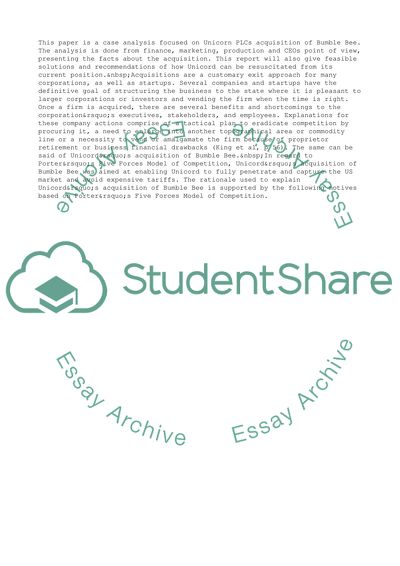Cite this document
(“Unicord PLC: The Bumble Bee Decision Case Study”, n.d.)
Unicord PLC: The Bumble Bee Decision Case Study. Retrieved from https://studentshare.org/business/1589704-case-analysis-unicord-plc-the-bumble-bee-acquisition
Unicord PLC: The Bumble Bee Decision Case Study. Retrieved from https://studentshare.org/business/1589704-case-analysis-unicord-plc-the-bumble-bee-acquisition
(Unicord PLC: The Bumble Bee Decision Case Study)
Unicord PLC: The Bumble Bee Decision Case Study. https://studentshare.org/business/1589704-case-analysis-unicord-plc-the-bumble-bee-acquisition.
Unicord PLC: The Bumble Bee Decision Case Study. https://studentshare.org/business/1589704-case-analysis-unicord-plc-the-bumble-bee-acquisition.
“Unicord PLC: The Bumble Bee Decision Case Study”, n.d. https://studentshare.org/business/1589704-case-analysis-unicord-plc-the-bumble-bee-acquisition.


